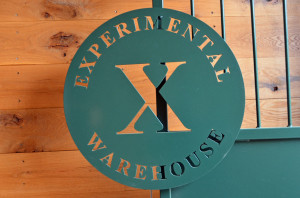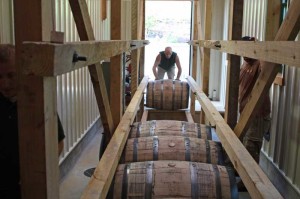Buffalo Trace’s Laboratory Warehouse Open For Business
By Richard Thomas

(Credit: Richard Thomas)
Although Buffalo Trace held the grand opening for Warehouse X, its experimental warehouse-aging laboratory, in November 2013, the facility has since lain dormant, awaiting the arrival of its first barrels of whiskey. On Tuesday that wait came to an end, and with its first consignment of whiskey the Warehouse X aging experiment has finally begun.
Climate is a major variable in how a whiskey matures, since the temperature and humidity divide between summer and winter controls how much whiskey is forced into the wood, how much comes back out again, how much is lost as the “angel’s share” due to evaporation, and further factors besides. Most whiskey-makers have a particular warehouse, or even just a particular part of a particular warehouse, that is known for turning out especially good product, and that underscores how important climate-driven storage issues are to what happens to whiskey in an oak barrel over time.
The point of the million-dollar Warehouse X is to conduct a controlled experiment in whiskey maturation. The warehouse is divided into cells, and each cell can be adjusted for variables of temperature, humidity, air flow, and light exposure. In the middle is an open corridor meant to represent typical warehouse conditions, serving as a control unit.

(Credit: Buffalo Trace)
“The Tornado Bourbon was the inspiration behind this,” said Buffalo Trace Public Events Manager Amy Preske, referring to the Colonel E.H. Taylor Warehouse C Bourbon. Most of the roof was torn off the distillery’s Warehouse C by a 2006 tornado, giving the 24,000 barrels within the unique experience of bearing the full brunt of a Kentucky summer as the warehouse was painstakingly repaired around them. The outstanding results of that natural disaster surprised those both inside and outside the company, and planted the seed behind the Warehouse X concept.
Ultimately 150 barrels will be stored in Warehouse X, with the current plan to check on the contents in two years and run the experiment as a whole out to six years. As for where this experiment to divine the secret of ideal aging condition will lead, whiskey fans should keep in mind that several years of experimentation, plus implementing the lessons learned, plus several more years of maturing a new product based on those lessons adds up to roughly two decades. Hopefully the results will be worth the wait.




One Comment